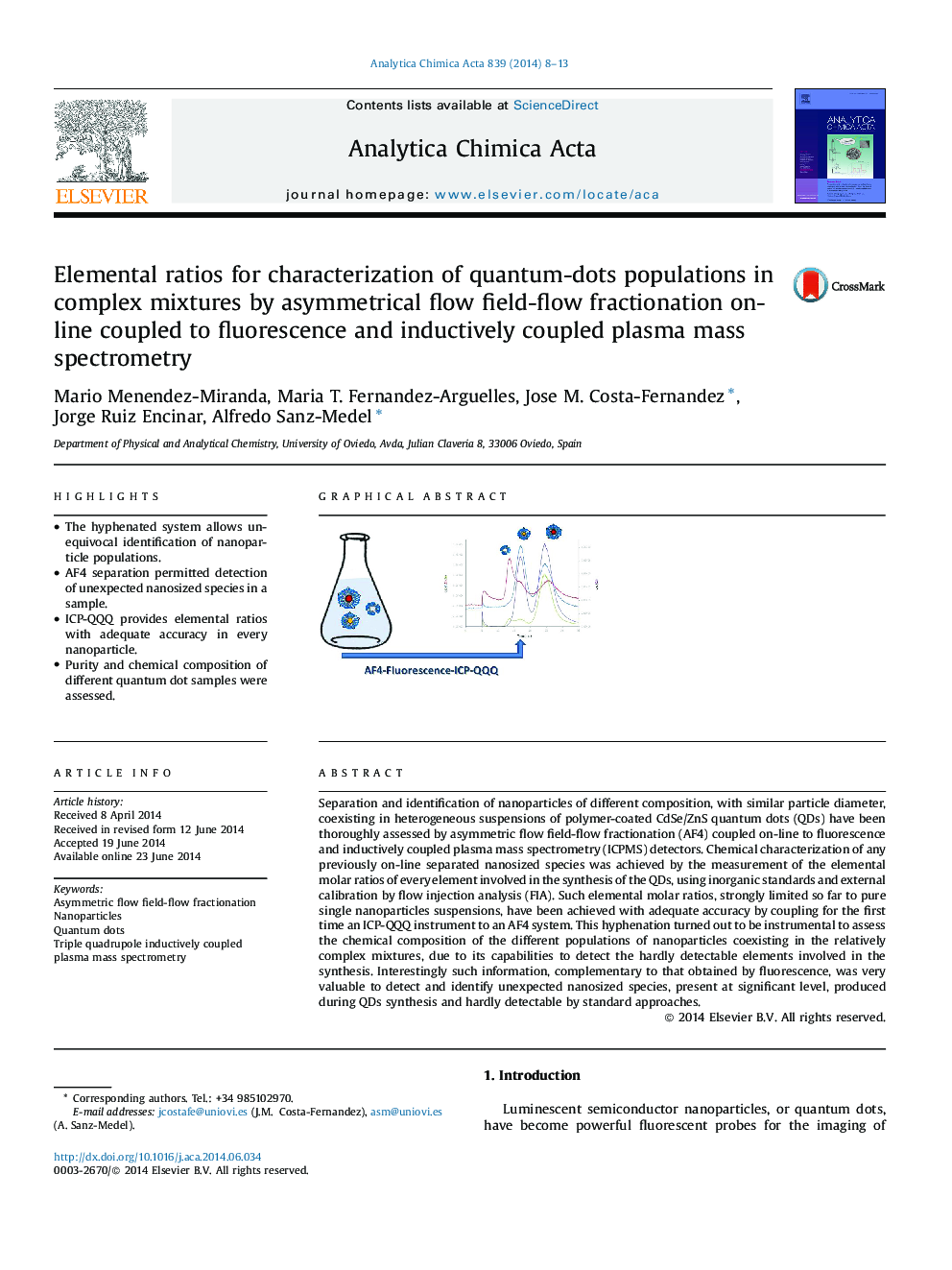| کد مقاله | کد نشریه | سال انتشار | مقاله انگلیسی | نسخه تمام متن |
|---|---|---|---|---|
| 1163844 | 1490993 | 2014 | 6 صفحه PDF | دانلود رایگان |
• The hyphenated system allows unequivocal identification of nanoparticle populations.
• AF4 separation permitted detection of unexpected nanosized species in a sample.
• ICP-QQQ provides elemental ratios with adequate accuracy in every nanoparticle.
• Purity and chemical composition of different quantum dot samples were assessed.
Separation and identification of nanoparticles of different composition, with similar particle diameter, coexisting in heterogeneous suspensions of polymer-coated CdSe/ZnS quantum dots (QDs) have been thoroughly assessed by asymmetric flow field-flow fractionation (AF4) coupled on-line to fluorescence and inductively coupled plasma mass spectrometry (ICPMS) detectors. Chemical characterization of any previously on-line separated nanosized species was achieved by the measurement of the elemental molar ratios of every element involved in the synthesis of the QDs, using inorganic standards and external calibration by flow injection analysis (FIA). Such elemental molar ratios, strongly limited so far to pure single nanoparticles suspensions, have been achieved with adequate accuracy by coupling for the first time an ICP-QQQ instrument to an AF4 system. This hyphenation turned out to be instrumental to assess the chemical composition of the different populations of nanoparticles coexisting in the relatively complex mixtures, due to its capabilities to detect the hardly detectable elements involved in the synthesis. Interestingly such information, complementary to that obtained by fluorescence, was very valuable to detect and identify unexpected nanosized species, present at significant level, produced during QDs synthesis and hardly detectable by standard approaches.
Figure optionsDownload as PowerPoint slide
Journal: Analytica Chimica Acta - Volume 839, 11 August 2014, Pages 8–13
